Search in CMI:
"Jal" means water, "Tarang" means Vibration. The Jal Tarang is a melodic percussive instrument used in India and used in classical repertoire of music from this country. The ceramic bowls are tuned with water and played with bamboo sticks in both hands.
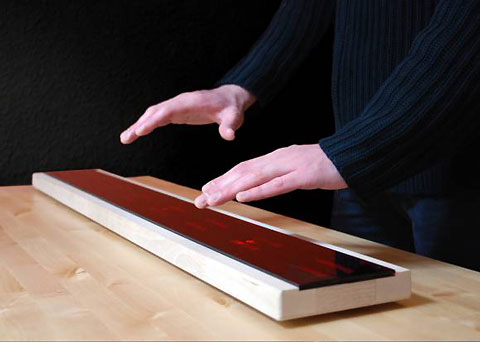
The air piano was invented by Omer Yosha in Germany . First prototypes came out in 2008 Yes it's called a "piano" but it has no keys neither you need to play "keys" to make it work. Yes, it looks like magic while your hands move in the air. Somehow I feel (as piano player myself) that maybe "air piano" was not the right name for it as I'd say it's more a "digital controller" but I guess that as it looks similar to a keyboard this came to mind to his creator. It looks in fact like magic and offers so many possibilities!

Above: Omer Yosha (inventor of the Air piano)
The hardware (which by the way is built in an elegant walnut wood and dark red acrylic glass) makes no sounds on its own and it needs to work connected with a computer (MAC or PC) via an USB port and works like a MIDI and OSC (open sound control) controller, so how does the airpiano sound? It does sound however you want it to... considering you can link it to any VST (virtual instrument) of your library, with the eye catchy fact that you don't need (like the theremin) to touch in order to make it sound but they are in fact completely different instruments both in concept and way of being played..Still the fact that you seem to play the "invisible" air in both of this instruments sure you'll catch the curiosity of your audience as performer. The air piano has a layout The airpiano comes with its own software to control it and it has a matrix of 24 discrete keys and 8 faders which are not on the screen but above arranged in a touch-free interface. each assigned with MIDI messages ready to be triggered. The length of a triggered note is equivalent to the time a hand is placed on the corresponding virtual key, which is also confirmed by LED feedback.
The airpiano software allows setting the device in numerous ways and since there are no “rules” of how to play an airpiano, new creative ideas and playing techniques will come to life!. Good thing is that is rather small ( 960 x 160 x 26 mm) and lightweight (less than 3 Kg) making it rather portable.
More info at the official site of the airpiano. They offer a downladable zip brochure with the specifications.
Price in europe is 1099 Eur including shipping, so a bit pricy, but looks intuitive and really versatile specially for performers in electronica music and solo acts
Below you can see a demonstration of the air piano made by Jo Hamilton. A british artist that has become one of the most reknown performers of this instrument and first artist using regularly on tour.
Longer version with more details in this other video.

The Balalaika with origins in the XVI century (sometimes wrongly referred as "russian guitars") is one of the major Russian musical instruments, along with the Domra, the Accordion and the Guitar.The Balalaika most likely evolved from the Oriental Dombra, which is still played in present-day Kazakhstan. It is said that the Balalaika embodies the Russian people's character, with its ability to switch from happiness to sadness with ease. It was common for the peasant ballads, composed for the Balalaika, to irreverently poke fun at the authority of the times. For this reason there were times when the Balalaika was banned by both the Orthodox Church and the State. The instrument enjoyed its greatest folk popularity in the early 18th century. It was also carried by the common people when they fled Russia at times of war.
This instrument is characterized by the triangular body (a trait that it acquired in the XIX century) and three strings (or six, in three double courses).The Balalaika is a member of the Lute family and is made in a number of sizes; Piccolo, Soprano, Prima, Secunda, Alto, Bass, Contra-Bass and Sub-Contrabass. The lower pitched the bigger the instrument is.All have three-sided triangular bodies, spruce or fir tops and backs made of from three to nine wooden sections, and usually have three strings. The prima balalaika is played with the fingers, the sekunda and alto either with the fingers or a plectrum depending on the music being played, and the bass and contrabass (equipped with extension legs which rest on the floor) are played with leather plectrums. It was in the XIX when it started to be featured in orchestras aside from the folk music.
The Balalaika strings are tuned above middle C to: A, E, E (1st-3rd). The 1st string is the thinnest, and lays over more frets than the 2nd & 3rd strings.
Read more at Wikipedia article
You can find some deluxe nice looking Balalaikas from Ethnic Musical Instruments store.
If you're intending to buy a balalaika online we recommend you to read this review article "buying and selling balalaikas in ebay" with some tips and advice.
Beware because some balalaikas offered for cheap price are more a souvenir than a professional instrument. A professional balalaika can cost up to 1000 dollars, though you can find some decent working ones for around 300$. Anyway you can find balalaikas in ebay for reasonable price and quality out of different stores, some vintage and second hand but in good playing condition.
If you're based in Europe you can purchase rather affordable Balalaikas from the german hyperstore Thomann like the following.
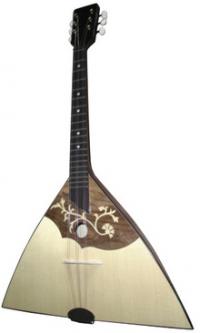
Above: Balalaika listed in Thomann Music Store.
You can find also in FOLKFRIENDS store (based also in germany) this Alto Balalaika
If in the states you can also find balalaikas and strings in yourworldinstrument store or fromt he ethnical music instrument store. Both have cases, instructional material and several models of affordable balalaikas
To teach yourself to play balalaika we´ll spotlight Mel Bay's Balalaika book by author Bibs Ekkel as instructional material. It has 160 pages and features a CD. It features a nice section about the history of this traditional instrument.
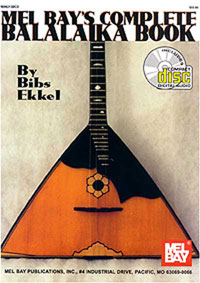
Two people playing "House of the Rising Sun" on the hydraulophone (water pipe organ flute which is the fountain outside the Ontario Science Centre).

The ektara is simple yet cool rhythmic/percussive folk instrument and has one single bowstring used mostly by wandering bards and minstrels from India and Bangladesh (called Baul), and when striked by the hand,the scale/pitch is changed too like in the african talking drum. The name Ektara comes from the Hindi and Bengali and means "Ek" means one, "tar" string. It is also known as "Gopichand" (or gopiyantra)
There are different variations in the construction. Pressing the two halves of the neck together pushes the peghead away from the body, thereby tightening the string and raising its pitch. The modulation of the tone with each slight flexing of the neck gives the Gopichand its distinctive sound. There are no markings or measurements to indicate what pressure will produce what note, so the pressure is adjusted by ear. This one stringed instrument provides a range of deep sounds, in one long slur.
The length differes being 2-3 feet i the most common measure and consists of bamboo that is split through most of the length. The two ends are pried apart and attached to a resonator made of coconut, gourd, a metal container or a hollowed out cylindrical section of wood. The open end of the resonator is covered with taught skin and a string penetrates the centre. This string is attached to a reinforced section in the centre. This string then passes through the hollow of the resonator and attaches to a tuning peg located in the bamboo.
The sound of the gopichand is most distinctive. There is a peculiar bending of the pitch as the two legs of the bamboo are squeezed together by the left hand while the right hand plucks the string.
Below you can see a video showing how it's played and its overall sound.
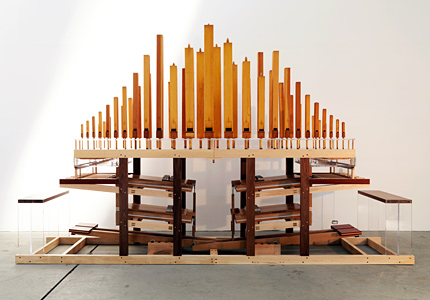
The "Auerglass" is an experimental and self designed two person pumped organ out of the mind of two artists Tauba Auerbach and Cameron Mesirow (singer-songwriter also known as Glasser). It's one of those delightful cases of "music meets art". The instrument needs of two person playing simultaneously so it cannot be played by one person alone.
Being the creators best friends they conceived it as a "tandem" instrument so each of the two players has a keyboard with alternating notes of a four octave scale and must pump to supply the wind to the other player's notes.

Above: Auerglass diagram 49 pipe. 4 bellows. 2 keyboards
White pine, plum, maple, southern yellow pine, blood wood, white oak, walnut, acrylic, steel, copper, leather, felt – L=15’-10 ½”; W= 2’-7 ½”; H= 9’-8”
The way it is played renders a final melody that is never quite the same and thus it has a great component of improvisation in it yet not so, as they have scored special melodies to be played this way. It sounds very "vintage" and "dreamy"
This gorgeous and insane looking Auerglass organ was constructed by Parsons Pipe Organ Builders in Canandaigua, New York and it was part of Tauba´s show "Here And Now/And Nowhere" at Deitch Projects
Below you can see some videos of the AUERGLASS and these two talented ladies in action.
Above: Official Auerglass project video with Tauba Auerbach and Cameron Mesirow
Performance outfits created for Tauba Auerbach and Cameron Mesirow by Ida Falck Øien.
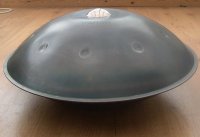
No, it is not a wok, and it is not an UFO out of the 50´s scifi movies...It resembles an inverted steel drum, and it sound is somehow similar yet more tribal and hypnotic, relaxing and serene. The instrument has a soft, sorrowful, melancholic tone a perfect companion for emotional and ambient music.Despite its rarity (and price) it's been embraced by many hippy communities and musicians on the street (sure a great inversion) and it's quickly become an sensation and new hottest trend among hand drum players.
The drum is an idiophone instrument that was invented by Felix Rohner and Sabina Scharer of PANart in 2000 in Switzerland. It was shown in 2001 at Musikmesse Frankfurt. It was the result of the investigation the result of many years of research on the steelpan and the study of the diverse collection of instruments from around the world, such as Gongs, Gamelan, Ghatam, drums, bells, etc The inventors were inspired to make the drum instrument from ethno musicological roots. They made it keeping in mind the Hijaz, the Aeolian and the Ake Bono. It takes its name from the Swiss German Bernese dialect word for "Hand" as the instrument is indeed played with the handd typically resting on the player´s lap, though you can also use a stand.
The Hang is made from two hemispheres of chemically-strengthened steel joined together by aprocess called gas nitride and those two "dishes" together render an object that looks like a flying saucer. The two sides are referred to as the Ding and Gu.
The Ding side contains seven to nine "tone fields" (the notes of the hang), which look like dents in the surface, arranged in a circle around the Ding itself, a smaller hemisphere in the center. The scale of the notes are chosen by the owner when the Hang is constructed and indeed can be customized to render different scales. The Ding can also be struck to create a deeper, gong-like note.
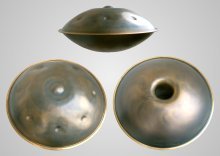
Top side (Ding) and bottom (Gu)
The ding of the drum instrument when played produces a sound like steelpans tune like harmonica, harps and bells. The player can change the scale he is playing in by striking the tone fields that lay in cross pattern around the center. The Gu side of the drum instrument is resembles the sound made by ghatam.
The Gu side has a bass port that can be played by slapping your palm over the hole (like an Udu) or used to bend the sound when playing the ding side. Udu like sounds can be produced with the air resonance within the clamped shallow shells, with the notes sounding like bells or harmonically tuned steel pans.The inner note on the bottom dome is the bass note, and when played in a dampened way allows change in pitch like a talking drum. Seven (in the bass version) or eight (treble version of the Hang) notes are tuned harmonically around a central deep note. The hemispheres are hardened by a process known as gas-nitriding.
The Hang is sometimes referred to as a Hang drum because it is often played by, and associated with, drummers. The 'drum' label is discouraged by PANArt and many players as simple drumming can limit the sonic complexity of the Hang. In fact playing it as a drum can be aggressive on the instrument cause injury to the player and detuning of the Hang. There are many ways to produce sound out of a Hang that do not involve what many consider 'drumming'.
Metallurgical and acoustic research by the makers has led to significant changes and refinement in structure, design, and process over the years since the first Hang was offered. In the spring of 2006 the hangmakers presented a new generation with an a upper surface of annealed brass and a ring of brass around the circumference. Thus we can distinguish among first (those made from 2001-2005) and second generation hangs (afterwards).
The instrument is often named HANG DRUM because it is associated with drums and drummers. Its creators, the PANart do not like their drum instrument to be labeled as ‘drum’. This is because simple drumming reduces the sonic complexity of the hang. If the their instrument is played only like a drum then the music gets detuned and it can also cause injury to the player.
Ok, .let´s see some action! :)
Above: Hang drum solo played by talented player Manu Delago
How do we get a Hang Drum?
I'm sorry, not EASY, neither CHEAP.The inventors are the only two people in the world who make hang drum instruments. They have their workshop in Berne where they have created each and every piece. The official site of the hang drum made by Panart is no longer working, of course they may have a long queue of orders still, but sadly the process involving one implies a long wait, quite a lot of money and a visit to the inventors. Somehow you can find second hand hang drums on ebay but the price they can reach is very high. When knowing more about the official way I shall come and edit the article, feel free to comment and provide your own input.
There is a very similar instrument to the hang which is the so called Caisa (in fact there´s a generation of instruments "similar to the hang" related as "handpans"). The caisa made out of steel and wood and played in a very similar way by Bill Brown in Germany. It's a bit more available and cheaper (yet not cheap (over 1000 Eur). You can find it on purchase for example in this store. Or you can try ebay for CAISA, there are often CAISAs in different tuning for less than 1000 Eur or even less if second hand.
There are other that are made out of propane tanks with tongues in the steel that are also tuned and played in a similar way to the hang. Here's a site with a selection of instruments similar to the HANG. But the site doesn't include my favorite (similar but also lovely in its unique way and previously featured in CMI Tribal Thunder Oscar
VSTS (HANG as Virtual Instrument)
For those of you that cannot afford to have a hang, or an instrument similar to a hang, or simply you just need the sound for your composition, you still have the option to purchase it as VST (Virtual instrument). I'll highlight Sonic Couture and Tonehammer as two reliable resources for the matter. I don´t own them myself to compare the samples (I wish!) in fact I make most of my "hang drum" sounds out of a Oscar Drum from Tribal Thunder that I conveniently sampled myself, but both companies have rare and amazing libraries and thus here you can find the links:
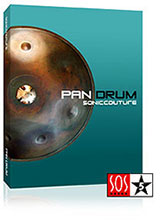

.TONEHAMMER ALIEN DRUM for only 59$
I've also find this other source for hang drum VST but reading user reviews it seems not to be up to the quality library standard compared with the soniccouture one, still here's the link if you want to listen to some demos It looslike the 1.0 version was free or donationware but the newer version is not for free can can be found here HANG VSTI 2.0
And if only for fun you can buy an apps hang drum emulator for your iphone and have fun ;-) for just 0.99$
Other useful links to know more about the HANG
- http://www.hang-music.com/
- The hangcyclopedia (an enciclopedia about the hang written by hang players)
- Article about the hang drum in Odd music
- Hangdrum.org
- Hangfan Community forum and resources (based in UK)
- Article about the hang including some of the accoustic principles
.
I've always loved theremin... one of the first electronic instruments and with one of the most eerie sounds so close to the human voice and still so difficult to tune and play. One day for sure, it's in "I must have" list.I've felt tempted to buy a theremin several times, though price for a decent one rounds 450 dollars and up.Thus I ended up surfing the net looking for several home-made theremin like gadgets just investigating and I ended up finding the blog of this talented man Ken Moore http://www.kenmooredesign.com, that has managed not only to make affordable home-made thermins but also add a very cool and visual aspect to the playing.

In his site he explains to us the basics and some examples of his Wii Theremin (controlled by a Wii remote) and the Kinetic Theremin. It really worth to watch the videos, because in this case "to see" explains much more than words. Not that I would not recommend a real theremin for serious playing but it resulted that Ken's experiments opened brand new possibilities both in sound and in visuals that rendered a mention for its own merit. so here we go:
Above: Homemade Wiimote-powered Theremin made by Ken Moore. The technology links a Wiimote controller, infrared LED gloves and a Roland JV-1080 synthesizer to create Theremin-like sounds (sine wave) or a nearly endless world of bizarre sounds. And the overall cost was 35$ to have your own MIDI theremin. I may say I already collected the materials... so feeling tempted to try this one soon and adapt it to my show. :) There are specific guidelines and instructions at his site.
Recently Ken surpised us with a new idea... his kinect theremin with a visual representation of the intensity and pitch by brightness and different hues for the notes. Well see yourself... and everything explained as the other example in his blog.




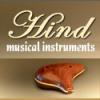













Where to buy one:
-http://www.worldmusicalinstruments.com/c-60-gopichand.aspx
In this store you can find soprano, tenor and Bass Gopichand. You can also buy there gopichand replacement strings.
-http://www.indian-instruments.com/stringed_instruments/ektara_gopiyantra.htm
-Etnian.com is a store placed in Spain that specializes in world instruments and have gopichands in several sizes. Page can be also loaded in english and other languages.
-n ebay there are some stores that list several models of gopichands at different prices like the one in the picture below
Some other useful links about this instrument:
-Read Wikipedia article about the Ektara
-Article about the Gopichand